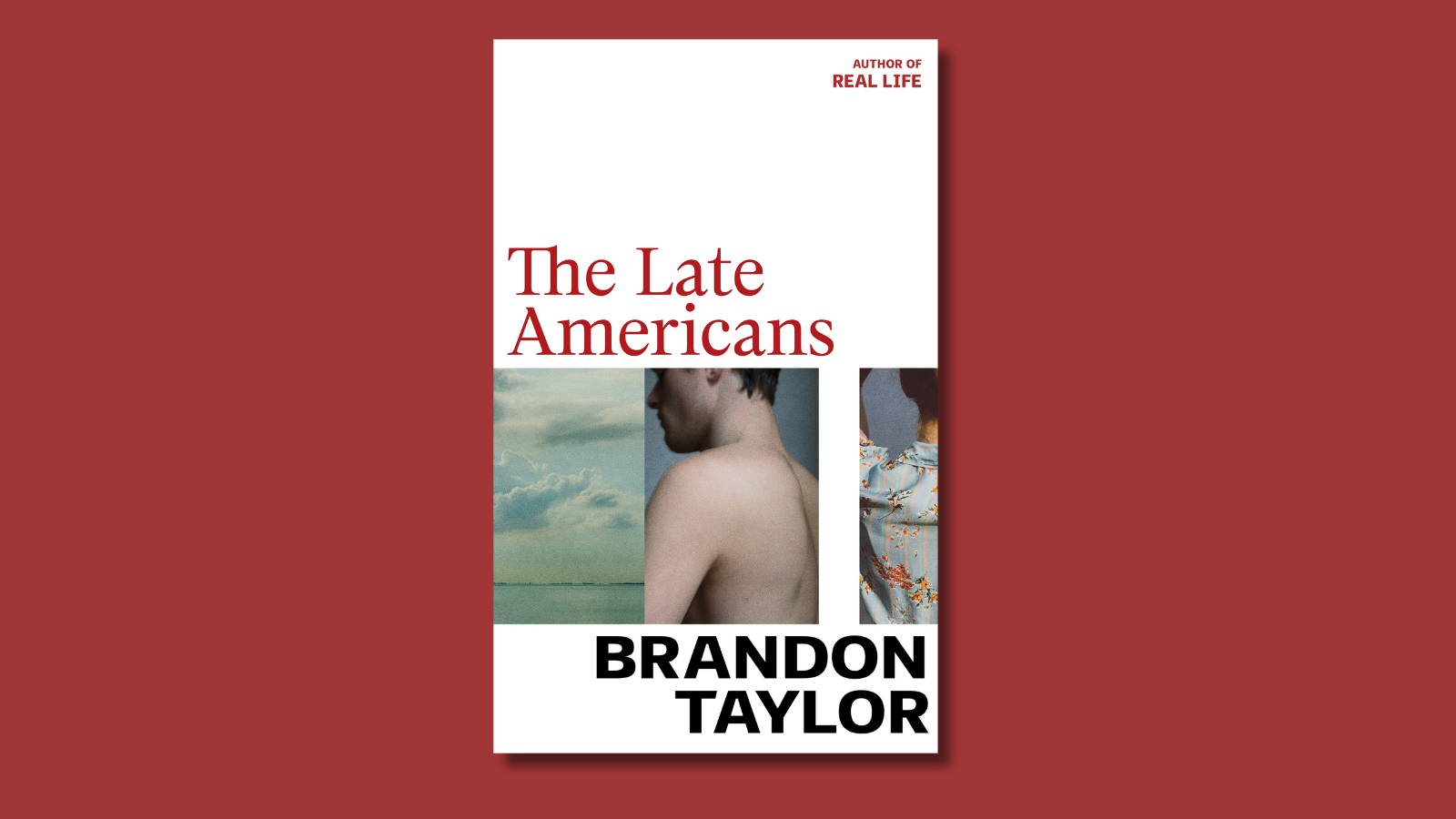I am not sure what a book should or shouldn’t do. This is too big and too small a question to ask of any one book. Nevertheless, we must try.
The Late Americans is ostensibly a novel about young people struggling, or putting on the front of struggling, or somewhere in between. The protagonists of The Late Americans are all artists, all young, mostly gay, and largely struggling to determine their identities and futures. Through their interactions with each other, we as readers witness a kind of history of late capitalism in action. The Late Americans is an arrested development bildungsroman, where the key turning point in the spiritual education of the protagonists comes as they recognise their role within a larger capitalist system. In their strain to become meaningful artists, Brandon Taylor’s characters finally come to recognise their own role within a bigger system of labour and exploitation. Most of the characters spend the novel trying to find jobs, make money, stay afloat whilst attempting to produce meaningful art. For these characters, there’s never enough money and never enough art being made.
If the novel is ostensibly about this youthful struggle, it is actually about characters finding themselves touched by God or gods in different ways. In one scene, gay sex is described as a process of “benediction.” This is a rather subversive provocation. “Benediction” is bestowed numerous times throughout the book between protagonists. Later, one character turns to another and makes this common exclamation:
“Oh my God,”
but not in the casual flippant sense of its day-to-day common use — the statement is made as if God is really, truly present. It is no accident that one of the protagonists is Timo, whose name is of German-Finnish origin literally meaning ‘honouring God.’
If this sounds like heavy stuff, it’s not. The novel is effortless, and the breeziest read I’ve encountered in a long time. The narrative coheres. It’s consistently engaging. I regularly laughed. I had no trouble finishing and identifying with The Late Americans. As my first time reading a novel by Brandon Taylor, I am now interested in seeking out more of his work in the future.
Ultimately, though, Taylor’s characters are all interchangeable with each other, and not in a manner that feels meaningfully intentional. All of his young gay disenfranchised artist characters behave and talk and think like all of the novel’s other young gay disenfranchised artist characters, which is a problem when Taylor appears to be reaching for an expansive kind of analysis of the contemporary ‘late-American’ world. Unfortunately, the contemporary world in this context registers as a kind of ‘Great Homogeniser.’ The novel gestures toward a bold, genuinely dialectical conversation that never emerges because the novel itself homogenises its arguments.
Take this argument put forward by Seamus about a poem he reads as part of his coursework for the Iowa Writers Workshop:
“[T]his is very moving. It’s very very moving. But what is it other than that? Is this a poem? It’s functionally equivalent to, what, like, a slasher movie? A children’s story?”
This quote demonstrates that Seamus is an aesthetic, not an emotional thinker. Elsewhere in the book, the opposing argument emerges. Take this moment, in which the working-class Ivan thinks about his boyfriend, the wealthy Goran:
“Goran didn’t need to think about the future because the future held no mystery to him, except in aesthetic terms. But Ivan couldn’t live on aesthetics.”
There is an argument developing here about the functionality of art within a capitalist society. Taylor is asking if art even can matter when people have to struggle to feed themselves.
But.
In the context of the novel, Ivan and Goran and Seamus all seem like the same person. They act the same way. They are motivated by the same things. They have the same concerns. In this sense, the novel reminded me of Dennis Cooper’s astonishing, landmark gay novel Closer, which utilises the interchangeability of its characters to highlight the superficial landscape of American high school suburbia. There is no discernible intention along these lines in The Late Americans, though if this was the intention, it has here been poorly executed. Because most of the characters are interchangeable, the novel never gets its teeth into the argument it puts forward over the competing virtues of aesthetic and material reality. The novel asks whether art is only a rich person’s game, but doesn’t conclusively come up with an answer. Maybe the lack of an answer is true to life, but I can’t shake the feeling that the reason the novel doesn’t offer any ultimate guidance on this front is because of its unfocused treatment of its protagonists.
Contemporary literature has arguably seen the downfall of the novel as a long-form sustained narrative focused primarily on the representation and growth of characters. This is in part related to the fallout from postmodernism. The postmodern era in literature saw the rise of metanarratives and the proliferation of numerous overlapping and concomitant realities in fiction as drawn from both low and high art.
The Late Americans is not a postmodern novel, but it is a novel unable to escape the idea that each of its characters lives in differently constructed versions of reality (for these characters, this is largely because of their class status). It is a problem, then, that despite the differing realities these individuals are supposed to inhabit, the characters themselves appear alike and equivalent to the reader. Taylor clearly signposts class as a differentiating factor in his characterisation, but this differentiation is never felt in the writing of the characters themselves.
On the aesthetic level itself, sometimes Taylor comes out with an image so true in an indescribable way that it made me jealous and had me wishing I could have crafted an image so right.
“[T]heir kiss grew more certain, like a slowly darkening piece of fabric.”
Other times, Taylor’s images are contrived, almost meaningless.
“[T]hey had fallen into a pattern as resolute as the line of succession of the kings of Norway.”
This is the kind of simile so specific it means nothing. Isn’t a pattern itself inherently resolute? Isn’t the repetition of a pattern, its resoluteness, its succession, precisely the thing that makes it a pattern? Why evoke the kings of Norway in a novel that otherwise has nothing to do with Norway, in a novel that is explicitly American? To offer one more example of prose that bothered me, this sentence opens the fifth chapter of the novel:
“After Seamus wrote [the] opening lines, a curious yet ordinary thing happened: the poem seized up on him and shut itself away.”
The observation is true. Poems can do this. I feel it innately. I relate to it. But is it really curious? Is it really unexpected? Is it even possible for something to be curious yet ordinary? I am not sure. This is a book filled with adjectives. Descriptions that seem tautological in some way or other abound throughout its pages.
Even with these aesthetic complaints taken into account, I had a nice time reading this book. It made me say “wow, that’s true” and say “wow, I feel that” and underline things with my pen more often than many other contemporary books do. I felt seen, even if I felt seen in an unspecific, hazy, imprecise kind of way. It’s also nice to read a book in which queerness is something fundamentally accepted, nice to read a book that treats sex casually as something that characters do for fun or out of boredom or as part of a contribution to a larger metaphor. I can use words from The Late Americans itself to demonstrate my point here.
“[It takes] a certain skill to write good sentences, to make good observations. […] It [is] not a minor gift. The faculty of observation.”
On the whole, Taylor does have this gift, but The Late Americans may not be its most obvious or successful presentation. This is a novel that observes and observes well. It just never feels like it excavates. The male characters of The Late Americans stand well-realised and fully formed but ultimately blend into each other like people in a crowd, signifying nothing but making a lot of noise.
And then, at the very end, something happens. Brandon Taylor introduces two female protagonists, and a change of tense.
“She was set apart,”
Taylor writes of one of these female protagonists, Bea. This is a lovely description because it also echoes the form of the narrative. Bea has been an invisible character, present but non-present, a ghost in the machine of the narrative until this point. It’s refreshing to read this chapter, and to then read the following present-tense chapter from worker/dancer Fatima’s perspective. Suddenly there is a kind of dazzling specificity to the novel. An opening-up. A world beyond the assumed world of the novel.
If it feels like a bit too little, too late, the fleeting pleasures of these final chapters remain solid. They are short stories, glistening in their near-perfection, with none of the unusual language or indistinct characterisation that preceded them. The book in this sense delivers its coup de grâce with aplomb.
Writing all of this in a review feels in itself complex and narcissistic and ideologically fraught because, as Taylor himself has said in a recent interview on the subject of workshopping writing,
“[it is]…absurd, [this idea] that a bunch of people…[who] have no formal training whatsoever get together and their formal training is to pretend to have authority over someone else’s work.”
What credence do I have to speak about Taylor’s work, other than that I write? In strict terms, I am formally trained in that I have a degree in English literature, but I’ve only very rarely been taught creative writing, in fact, I have taught more creative writing than I have learned. What do I then qualify as? Another gay-artistic-working-class-pretender like all the other indistinct types in Brandon Taylor’s novel? Sure. Maybe this means that I can speak on my own behalf.
I’m not sure what a book should or shouldn’t do, but this is what The Late Americans did for me.
When reading Taylor’s novel, despite all my technical issues with its construction and its language, I watched my world open up in a series of successive allegories and images all at once. I witnessed memories of my high school years and my university years stepping on each other all at once, crowding me for room. Glimpses: watching Terrence Malick’s Song to Song on a school computer and being told off for it, rehearsing Hamlet in a university room-for-hire, spending long days in lockdown reading Anne Carson and Joan Didion and Seneca and Francis Bacon and arguing over the distinct grammatical characteristics of humor in non-fiction language, showing my boyfriend Blow Out, one of the great American films, and having to explain it to him, misunderstanding a production of Twelfth Night and having somebody else explain that to me instead, being in too far over my head, wading in the shallow waters instead, sharing red wine next to a fire the night after graduating university, drinking coffee at the Fo Guang Shan Waterdrop Café in Upper Riccarton, Christchurch, trying to write my own high school novel and failing, watching my friends grow up and get married and get real jobs and hearing news that one or two of them had died and going to their funerals and then catching up with other old friends for dinner, glimpses like this flashing by in memories flying from details on the page specific and general and resultantly meaningful. Perhaps I am therefore coloured indistinct too. Perhaps that is distinguished enough.
bad apple would like to thank Penguin Random House NZ for providing a copy of The Late Americans for this review. You can find where to purchase the book in Aotearoa from the Penguin website.



